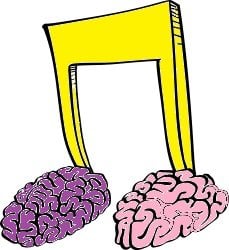The song, “Get Happy,” famously performed by Judy Garland, has encouraged people to improve their mood for decades. Recent research at the University of Missouri discovered that an individual can indeed successfully try to be happier, especially when cheery music aids the process. This research points to ways that people can actively improve their moods and corroborates earlier MU research.
“Our work provides support for what many people already do – listen to music to improve their moods,” said lead author Yuna Ferguson, who performed the study while she was an MU doctoral student in psychological science. “Although pursuing personal happiness may be thought of as a self-centered venture, research suggests that happiness relates to a higher probability of socially beneficial behavior, better physical health, higher income and greater relationship satisfaction.”
In two studies by Ferguson, participants successfully improved their moods in the short term and boosted their overall happiness over a two week period. During the first study, participants improved their mood after being instructed to attempt to do so, but only if they listened to the upbeat music of Copland, as opposed to the more somber Stravinsky. Other participants, who simply listened to the music without attempting to change their mood, also didn’t report a change in happiness. In the second study, participants reported higher levels of happiness after two weeks of lab sessions in which they listened to positive music while trying to feel happier, compared to control participants who only listened to music.

However, Ferguson noted that for people to put her research into practice, they must be wary of too much introspection into their mood or constantly asking, “Am I happy yet?”
“Rather than focusing on how much happiness they’ve gained and engaging in that kind of mental calculation, people could focus more on enjoying their experience of the journey towards happiness and not get hung up on the destination,” said Ferguson.
Ferguson’s work corroborated earlier findings by Ferguson’s doctoral advisor and co-author of the current study, Kennon Sheldon, professor of psychological science in MU’s College of Arts and Science.
“The Hedonic Adaptation Prevention model, developed in my earlier research, says that we can stay in the upper half of our ‘set range’ of potential happiness as long as we keep having positive experiences, and avoid wanting too much more than we have,” said Sheldon. “Yuna’s research suggests that we can intentionally seek to make mental changes leading to new positive experiences of life. The fact that we’re aware we’re doing this, has no detrimental effect.”
Notes about this psychology and music research
Ferguson is now assistant professor of psychology at Pennsylvania State University Shenango. The study, “Trying to Be Happier Really Can Work: Two Experimental Studies,” was published in The Journal of Positive Psychology.
Contact: Timothy Wall – University of Missouri
Source: University of Missouri press release
Image Source: The rather funky music brain image was adapted from a public domain image at Neuroscience News.
Original Research: Abstract for “Trying to be happier really can work: Two experimental studies” by Yuna L. Ferguson and Kennon M. Sheldon in The Journal of Positive Psychology. Published online December 19 2013 DOI:10.1080/17439760.2012.747000






